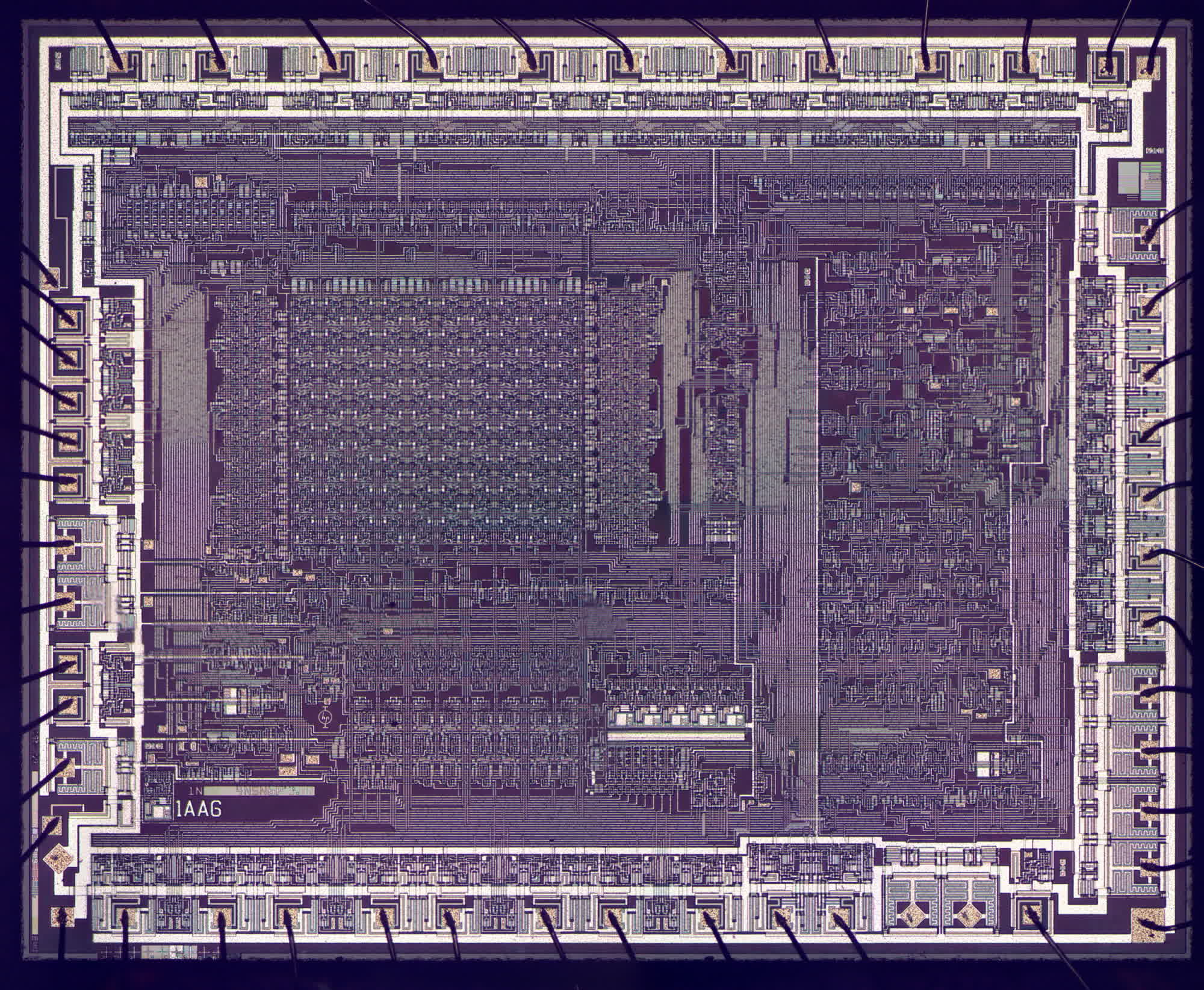In a nutshell: Ken Shirriff is an IC reverse engineering enthusiast who enjoys restoring vintage computers and devices. While repairing an 8-inch HP floppy drive, the computer historian discovered an obsolete manufacturing technology that was almost lost to time.
The old floppy drive had a broken interface chip, Shirriff explained on his blog. He decided to decap it and took photos. The chip has an unusual substrate, consisting of a sapphire base with silicon elements and metal wiring on top. The “silicon-on-sapphire” chip is partly transparent, Shirriff notes, and was designed to function as an interface between HP’s interface bus (HP-IB) and the Z80 processor, which acts as the central hub in the floppy drive controller.
The silicon-on-sapphire chip is a PHI (Processor-to-HP-IB Interface) component, used in various HP products to manage the bus protocol and buffered data between the interface bus and a device’s microprocessor. The sapphire substrate imparts the chip with unique capabilities, which Shirriff elaborates on in his post.
Unlike a regular integrated circuit, the transistors on the chip are completely isolated because the sapphire substrate serves as an insulator. This means there is reduced capacitance between transistors, improving performance and providing protection against radiation or low-impedance short circuits.

Thanks to its natural hardening capabilities against radiation, the silicon-on-sapphire configuration had been used since 1963 or earlier, including in spacecraft like the Galileo probe. Shirriff compared the PHI chip to other processors from the 70s, which were made from both silicon-on-sapphire and silicon-only substrates.
HP’s MC2 16-bit processor from 1977 utilized silicon-on-sapphire technology and had 10,000 transistors, according to the historian, running at 8 megahertz on just 350 mW of power. In comparison, the Intel 8086 16-bit CPU from 1978 was implemented on a “regular” silicon substrate using NMOS instead of the CMOS manufacturing process. The chip had 29,000 transistors, ran at 5 megahertz initially, and consumed up to 2.5 watts of power.
While silicon-on-sapphire substrates provided some advantages in terms of performance and power consumption, as Shirriff’s examination confirms, they weren’t as densely packed with transistors as silicon ones. Furthermore, “crystal incompatibilities” between silicon and sapphire made manufacturing challenging, resulting in a nine percent yield for HP. This difficulty likely played a significant role in establishing silicon as the material of choice for IC manufacturing in subsequent years.

